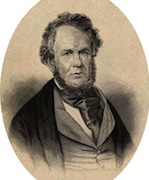 by R. D. Madison and Victoria Brehm (2000)
by R. D. Madison and Victoria Brehm (2000)
SCHOOLCRAFT, HENRY ROWE (1793-1864). Born in upstate New York, Henry Rowe Schoolcraft was trained as a glassmaker. Like many Americans of his age, however, as a young man Schoolcraft went west, where his knowledge of mineralogy led eventually to his appointment to the 1820 expedition to the shores of Lake Superior led by Lewis Cass. In 1822 Schoolcraft became an Indian agent at Sault Ste. Marie, Michigan, where he met and married Jane Johnston, granddaughter of the Chippewa chief La Pointe. They gathered the material that would form the basis of his most important work, Algic Researches (1839), the earliest collection of American Indian stories in the United States, revised and reprinted as The Myth of Hiawatha (1856) in the wake of the success of Henry Wadsworth Longfellow’s narrative poem The Song of Hiawatha (1855).
Not surprisingly, Schoolcraft’s adaptations of his Great Lakes material were influenced by the romantic novel and read like a cross between James Fenimore Cooper and Nathaniel Hawthorne. Schoolcraft has come under fire from anthropologists for his ethnocentric interpretation of his Native American sources. Nevertheless, he saved much indigenous material that otherwise would have been lost, and his animist portraits of Great Lakes fauna and watercraft provided the underpinnings for one of America’s greatest epics.
Algic Researches (1839)
Archive.org
Google Book Search
The Myth of Hiawatha (1856)
Archive.org
Google Book Search
keywords: white, male
